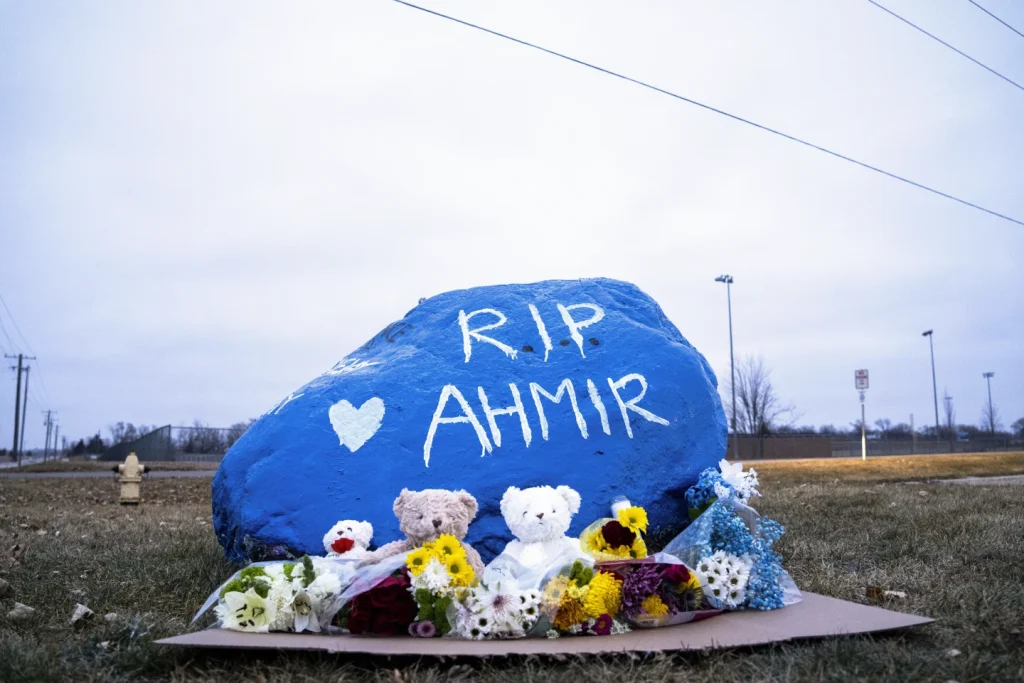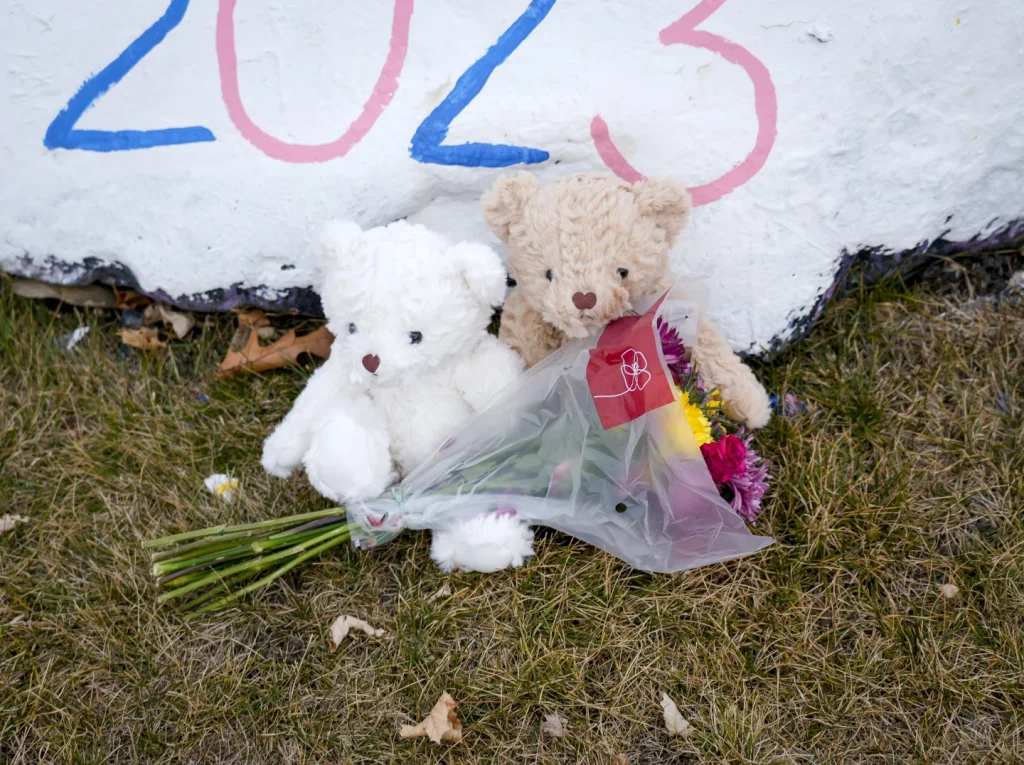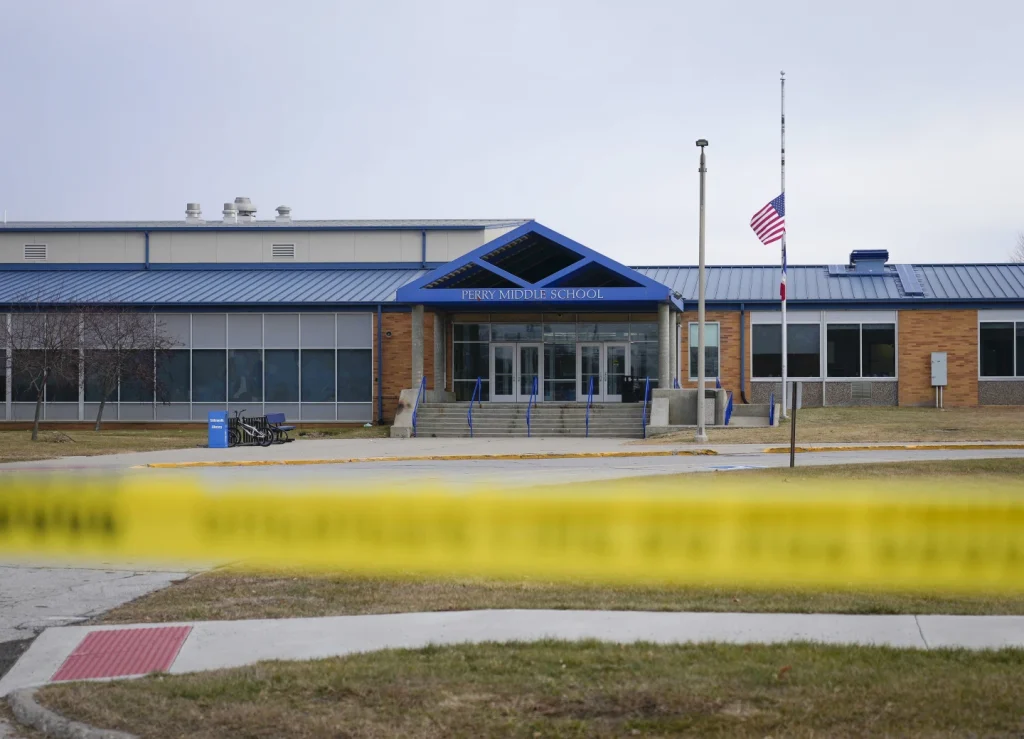The recent tragic incident at a small-town Iowa high school has sparked a national conversation about the role of parents in preventing school violence.
The parents of the 17-year-old perpetrator, Dylan Butler, have released a statement expressing their shock and devastation at the events that unfolded.
They claim to have had no prior knowledge of their son’s intentions and are fully cooperating with investigators to understand why he committed such a senseless act.
The statement released by Jack and Erin Butler highlights the profound grief and sorrow they feel for the victims and their families.
It is clear that they are struggling to come to terms with the actions of their son and the impact it has had on the community.
This tragic event has undoubtedly left a lasting scar on the small town of Perry, Iowa, and has raised important questions about how such violence can be prevented in the future.
The Butlers’ statement raises important questions about the responsibility of parents in preventing school violence.
It is a deeply troubling reality that parents may not always be aware of their children’s inner turmoil and potential for violence.
In this case, the Butlers claim to have had no inkling of their son’s intentions, highlighting the complexity of identifying and addressing such issues within the family unit.
While it is crucial to hold individuals accountable for their actions, it is also important to consider the broader societal and systemic factors that contribute to acts of violence.
The Butlers’ statement underscores the need for a comprehensive approach to preventing school violence, one that involves not only individual accountability but also support for mental health, community involvement, and effective measures to identify and address potential threats.
In the wake of this tragedy, it is essential for communities and policymakers to come together to address the root causes of school violence and implement strategies to prevent such events from occurring in the future.
This includes providing resources for mental health support, promoting a culture of inclusivity and empathy within schools, and ensuring that individuals who may pose a threat receive the help they need before it’s too late.
The Butlers’ statement serves as a reminder of the devastating impact of school violence and the need for a collective response to prevent future tragedies.
It is a call to action for parents, educators, lawmakers, and community members to work together to create a safer and more supportive environment for all students.
While the events in Perry, Iowa, have left a community in mourning, they also serve as a catalyst for change and a renewed commitment to preventing such senseless acts of violence in the future.
The tragic events that unfolded at Perry High School have left the community in shock and mourning. The senseless act of violence perpetrated by a student has resulted in the loss of a young life and the injury of several others.
The aftermath of this tragedy has left many questioning how such a horrific event could have occurred and what could have been done to prevent it.
The fact that the perpetrator took his own life after carrying out the attack only adds to the complexity of this situation.
It raises questions about the mental state of the individual and what could have driven him to commit such a heinous act.
The impact of this event will be felt for years to come, as the families of the victims mourn their loss and the community grapples with the aftermath.
The investigation into the shooting is ongoing, with law enforcement officials working tirelessly to gather evidence and interview witnesses in an effort to understand the events leading up to the attack.
The Iowa Division of Criminal Investigation is leading the case, and they have not yet released any updates on their findings.

It is clear that this will be a lengthy and thorough process, as they seek to uncover the motives behind the shooting and determine if there were any warning signs that could have been addressed.
In the wake of this tragedy, the family of 11-year-old Ahmir Jolliff is left to plan his funeral, a heartbreaking task that no family should ever have to undertake.
The loss of a young life is a devastating blow to the community, and the pain of this loss will be felt by all who knew and loved Ahmir.
As the community comes together to support the Jolliff family and the other victims of the shooting, it is important to remember the impact that this event has had on all those involved.
The healing process will be a long and difficult journey for the Perry High School community, as they come to terms with the trauma of this event.
It is crucial that they receive the support and resources they need to cope with the aftermath of the shooting, and that steps are taken to prevent such a tragedy from occurring again in the future.
The safety and well-being of students and staff must be a top priority, and it is essential that measures are put in place to address any potential threats and support those who may be struggling with mental health issues.
As the investigation into the shooting continues, it is important for the community to come together in support of one another.
The impact of this tragedy will be felt for years to come, but by standing together and offering support to those affected, the community can begin to heal.
It is a time for reflection, for mourning, and for coming together to ensure that such a tragedy never occurs again.
The memory of Ahmir Jolliff and the other victims of the shooting will live on, and their lives will be remembered as the community works to move forward from this devastating event.
In response to the tragic shooting incident in Dallas County, Iowa, Governor Kim Reynolds took decisive action by issuing a disaster proclamation on Monday.
This proclamation was aimed at mobilizing state resources to support the response efforts following the harrowing event.
Governor Reynolds’ statement underscored the involvement of various state agencies, including those responsible for education, health, human services, as well as the Department of Public Safety and its criminal investigation division.
The gravity of the situation was further highlighted by the collective outcry from concerned citizens, particularly the youth, as several hundred students and other protesters gathered to march on the state Capitol in Des Moines, located approximately 40 miles away from Perry.
Their unified call for tighter gun control laws in the state resonated with a sense of urgency and a demand for meaningful change.
The confluence of these events serves as a poignant reminder of the profound impact of gun violence on communities and the imperative for comprehensive and effective measures to address this pressing issue.
It is evident that the repercussions of such incidents extend far beyond the immediate physical harm inflicted, permeating the fabric of society and prompting a critical reassessment of existing policies and practices.
In the wake of such a distressing event, it is incumbent upon leaders and policymakers to heed the impassioned voices of their constituents and take meaningful steps to prevent similar tragedies in the future.
The issuance of a disaster proclamation by Governor Reynolds signifies a pivotal moment in which the state’s resources and capabilities are marshaled to provide support, aid, and comfort to those affected by the shooting.
Furthermore, the engagement of diverse state agencies underscores the multifaceted nature of the response, encompassing not only law enforcement and criminal investigations but also the broader domains of education, health, and human services.
The mobilization of students and protesters at the state Capitol reflects a groundswell of public sentiment, compelling a reexamination of existing gun control laws and policies.
The impassioned plea for tighter regulations on firearms underscores the collective determination to safeguard communities and mitigate the risk of future tragedies.
Their advocacy serves as a potent catalyst for dialogue and action, prompting a reevaluation of legislative frameworks and the implementation of measures aimed at curbing the proliferation of firearms and enhancing public safety.
In the broader context, the events in Iowa reverberate across the national landscape, prompting a broader discourse on the intersection of gun violence, public safety, and legislative action.
The resonance of these events underscores the interconnectedness of communities and the imperative for collaborative efforts to address pervasive societal challenges.
It is incumbent upon policymakers, stakeholders, and citizens alike to engage in constructive dialogue, informed deliberation, and concerted action to effect tangible change.
As the reverberations of the shooting in Dallas County continue to unfold, it is essential to recognize the enduring impact of such incidents and the imperative for proactive, holistic responses.
The issuance of a disaster proclamation and the collective advocacy for tighter gun control laws represent pivotal junctures in the ongoing narrative of public safety and legislative action.
These events underscore the resilience, determination, and unity of communities in the face of adversity, and serve as a clarion call for sustained efforts to foster a safer, more secure future for all.

In conclusion, the shooting in Dallas County, Iowa, and the subsequent response underscore the profound impact of gun violence on communities and the imperative for comprehensive, proactive measures to address this pressing issue.
The issuance of a disaster proclamation and the collective advocacy for tighter gun control laws reflect pivotal moments in which the resilience, determination, and unity of communities are manifested.
It is incumbent upon leaders, policymakers, and citizens to engage in constructive dialogue and concerted action to effect meaningful change and foster a safer, more secure future for all.
